Choosing the Best Meat Saw Machine for Your Business
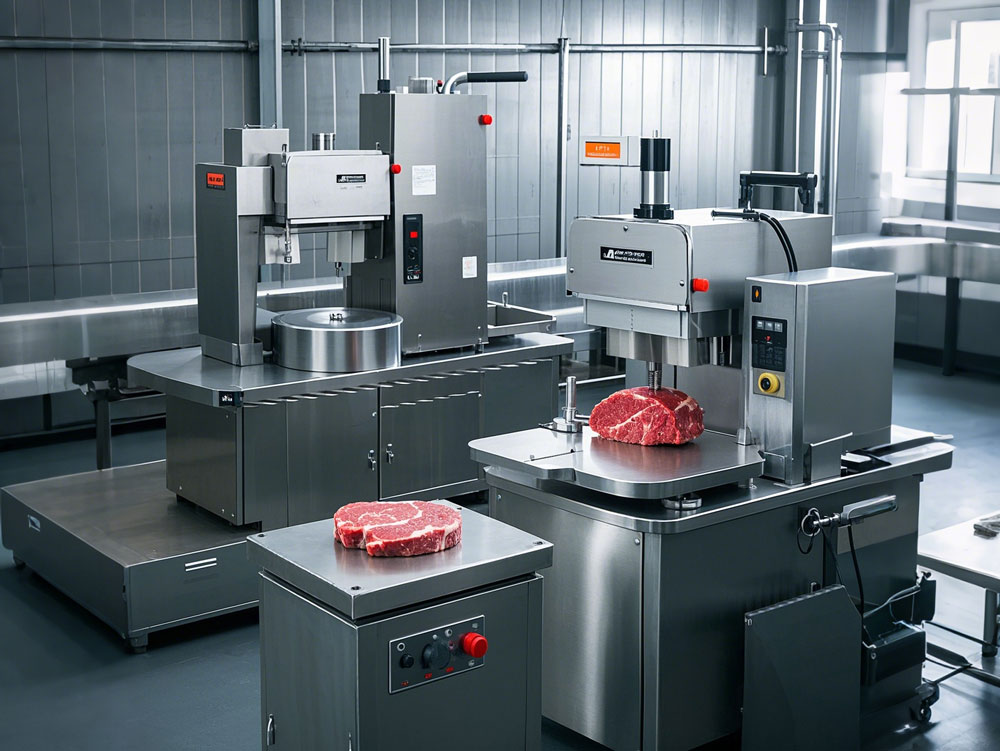
Introduction to Meat Saw Machines
Meat saw machines are powerful tools designed to simplify and enhance the cutting process in both small-scale and large-scale meat processing. Whether in a butcher's shop, a supermarket, or a commercial meat-processing facility, these machines ensure precise cuts with minimal effort. In this article, we'll explore the mechanics, benefits, and various considerations when selecting the ideal meat saw machine for your needs.
The Role of Meat Saw Machines in Modern Butchery
In the past, butchers relied heavily on manual tools to cut through tough meats and bones. Today, meat saw machines have revolutionized the industry. These machines increase efficiency, reduce labor costs, and enable meat processors to handle high volumes with precision. They can cut through bones, joints, and dense muscle tissue, making them essential for creating a wide variety of meat cuts.
Why Meat Saw Machines are Essential in Food Processing
Meat saw machines play an indispensable role in food processing by providing uniform cuts, reducing waste, and ensuring faster production cycles. Their ability to handle large amounts of meat quickly and safely makes them invaluable in both commercial kitchens and butcher shops. The versatility of meat saw machines allows processors to work with different meat types, sizes, and cuts, from tenderloin to bone-in ribs.
An Overview of Meat Saw Machines and Their Importance
A meat saw machine is designed to cut through meat, bones, and cartilage with precision. They can be found in many processing environments, from small artisanal butcher shops to large-scale food production plants. These machines improve productivity, enhance consistency, and ensure safety, making them a key component of modern meat processing.
Understanding How a Meat Saw Machine Works
To appreciate the effectiveness of a meat saw machine, it’s important to understand its basic mechanics. These machines function by using a rotating blade to slice through meat and bones. The speed, size, and power of the blade depend on the specific model, but all meat saw machines are built to handle tough, fibrous tissue with ease.
The Mechanics Behind a Meat Saw Machine
At the core of every meat saw machine is the blade, often made of stainless steel, which oscillates or rotates at high speed. The meat is fed into the machine, and the blade cuts through the meat as it moves along a track. The mechanism that drives the blade could be either manual or electric, depending on the machine’s design.
Key Components and Their Functions
Blade: The primary cutting tool, available in various sizes, materials, and teeth configurations.
Motor: Drives the movement of the blade, providing the necessary power.
Frame: The body of the machine, usually made of durable stainless steel.
Table/Platform: Holds the meat in place during cutting, ensuring stability and precision.
Guard: Provides safety by covering moving parts and preventing accidental contact.
How Meat Saw Machines Cut Through Different Types of Meat
Meat saw machines can cut through a variety of meat types, including beef, pork, poultry, and even fish. The design and power of the blade determine the machine's ability to cut through bones, skin, fat, and other dense tissues. For instance, electric meat saws tend to be more powerful and are better suited for cutting through larger and tougher cuts.
Types of Meat Saw Machines
There are several types of meat saw machines, each designed for different tasks and operational scales. Understanding these types will help you choose the best one for your needs.
Manual Meat Saw Machines: A Traditional Choice
Manual meat saws are a cost-effective solution for small butcher shops or artisanal meat processors. They require physical effort to operate but are less expensive and often more compact. While they may lack the efficiency of electric models, they are still effective for smaller-scale operations.
Electric Meat Saw Machines: Efficiency and Power
Electric meat saw machines offer greater efficiency and precision, making them ideal for high-volume operations. With more power, they can easily cut through large quantities of meat and bones without compromising on speed or consistency. These machines are a staple in commercial meat processing plants and butcher shops.
Band Saw Meat Machines: Versatility in Large-Scale Operations
Band saw meat machines are popular in industrial meat processing due to their versatility and ability to handle a variety of meats, including tough cuts. These machines use a continuous loop of sharp steel band blades, which are perfect for both bone-in and boneless cuts. They can also be used to process both raw and cooked meat.
Floor-Standing vs. Benchtop Meat Saws: Which is Right for You?
Floor-standing meat saws are large, stationary machines that are ideal for high-volume operations. They offer more stability and power for large-scale cutting tasks. Benchtop saws, on the other hand, are compact and more suitable for smaller operations or limited workspace.
Choosing the Right Meat Saw Machine for Your Needs
Selecting the right meat saw machine involves several considerations, including the type of meat you plan to process, the volume of cuts, and the space available in your operation.
What to Look for When Purchasing a Meat Saw Machine
Key factors to consider when purchasing a meat saw machine include power specifications, blade quality, ease of maintenance, and safety features. Be sure to choose a machine that matches your operational needs and can handle the volume and type of meat you intend to process.
Considerations Based on Meat Type and Size
Different meats require different types of cuts. For example, poultry and fish may require a finer blade, while tougher cuts like beef and pork need more powerful machines capable of handling large bones. Choose a machine that can accommodate your most common meat cuts.
How to Choose the Right Saw for Different Cutting Tasks
Whether you’re cutting through bone, skin, or muscle tissue, choosing the right saw is crucial. Consider the thickness of the blade and the motor power when selecting a machine. Additionally, for precision cuts, look for a saw with adjustable speed settings.
Features of a Quality Meat Saw Machine
When evaluating meat saw machines, several features set high-quality models apart from the rest.
Power and Motor Specifications: What You Need to Know
The motor is a crucial component that determines the machine’s cutting efficiency. A stronger motor allows for smoother, faster cuts and reduces the risk of the machine overheating or stalling under pressure.
Blade Quality and Material: The Key to Clean Cuts
Blade quality is critical for achieving smooth, precise cuts. High-quality stainless steel blades are common in commercial meat saws, as they offer both strength and longevity. The material and thickness of the blade can also affect the texture of the meat after it’s been cut.
Adjustable Blade Speed: Tailoring Your Cuts for Precision
Adjustable blade speed is essential for versatility. It allows operators to fine-tune the cutting process based on the type of meat being processed. Slower speeds are ideal for thicker, tougher cuts, while faster speeds work best for softer meats.
Safety Features: Ensuring a Safe Cutting Environment
Safety is paramount when working with meat saw machines. Look for models that include built-in safety guards, emergency stop buttons, and blade covers to protect the operator from injury. Some machines also include auto-shutoff features to prevent accidents.
How to Use a Meat Saw Machine
Operating a meat saw machine requires proper technique and safety precautions. Follow the step-by-step guide to ensure you get the best performance from your machine.
Step-by-Step Guide to Operating a Meat Saw Safely
Prepare the Meat: Ensure the meat is at the correct temperature and properly positioned.
Set Up the Machine: Check the blade tension, motor, and safety guards.
Start Cutting: Feed the meat slowly and steadily into the saw, using the provided pushers or guides.
Turn Off the Machine: Always turn off the machine before cleaning or making adjustments.
Preparing Meat for Cutting: Tips and Techniques
Before cutting, make sure the meat is clean and chilled. This will prevent it from being too slippery or difficult to cut. Larger cuts should be portioned down into manageable pieces for easier cutting.
What Not to Do When Using a Meat Saw Machine
Avoid forcing meat through the saw, as this can damage the blade or the machine. Always maintain a steady, controlled feed to ensure clean cuts. Also, never attempt to cut frozen meat, as it could cause the blade to seize.
Meat Saw Machine Maintenance and Care
Proper maintenance extends the life of your meat saw machine and ensures optimal performance.
Routine Cleaning and Maintenance Tips for Optimal Performance
Regular cleaning is essential to prevent meat residue buildup and ensure hygiene. Clean the saw after each use, paying special attention to the blade, motor, and frame.
How to Replace and Maintain the Blade for Longevity
Replace the blade when it starts showing signs of dullness. Regularly inspect the blade for cracks or wear and ensure it remains properly tensioned.
Troubleshooting Common Meat Saw Problems
If your saw is stalling or not cutting properly, check for misalignment, dull blades, or motor issues. Regular maintenance and timely repairs can prevent these issues.
How to Extend the Life of Your Meat Saw Machine
To maximize the lifespan of your machine, perform routine inspections, lubricate moving parts, and replace worn-out components immediately. Also, make sure to store your machine in a clean, dry environment to avoid rust and corrosion.
Meat Saw Machine Safety Considerations
Safety protocols are critical when using meat saw machines to avoid injuries.
Safety Protocols for Using Meat Saw Machines
Always follow the manufacturer's guidelines for safe operation. Keep hands and clothing away from the blade while in use and ensure the machine is turned off when not in operation.
The Importance of Personal Protective Equipment (PPE)
Wearing gloves, safety goggles, and other PPE is essential when operating meat saw machines. PPE provides an extra layer of protection in case of accidental contact with the blade.
How to Prevent Accidents and Injuries During Operation
Prevent accidents by following proper operational procedures, including keeping the machine clean, ensuring the blade is sharp, and using the safety features built into the machine.
Meat Saw Machine Applications
Meat saw machines are used in various settings, each with its own set of unique requirements.
Meat Processing and Butchering: Commercial and Industrial Use
In large-scale meat processing facilities, saw machines help automate the cutting process, ensuring high throughput and reducing labor costs. The ability to cut various types of meat precisely is a key factor in their widespread use in the industry.
How Meat Saw Machines Are Used in Supermarkets and Butcher Shops
In retail settings, meat saw machines allow for customized cuts of meat, helping butchers to offer customers exactly what they need while maintaining high standards of freshness and cleanliness.
Using a Meat Saw Machine for Specialty Meat Cuts and Bone Removal
Some meat saw machines are designed for specialty cuts, including steaks, chops, and bone-in meats. These machines ensure clean, professional cuts, regardless of the meat’s texture or composition.
Technological Advances in Meat Saw Machines
The evolution of meat saw machines has brought about exciting advancements in both technology and efficiency.
Digital Controls and Automation in Modern Meat Saws
Modern meat saws are equipped with digital controls that make operations easier and more precise. These machines can automatically adjust cutting speeds and blade tension for optimal performance.
The Role of Robotics in Meat Saw Operations
Robotics and automated systems are starting to play a bigger role in meat processing, reducing human labor and improving accuracy.
Innovations in Blade Technology for Smoother, Faster Cuts
New blade technologies focus on improving cutting efficiency, such as advanced coatings and unique blade designs that allow for smoother, faster cuts with less wear and tear.
Energy Efficiency and Sustainability in Meat Saw Machines
In today's environmentally conscious world, energy-efficient and sustainable practices are becoming increasingly important in meat processing.
Reducing Energy Consumption with Modern Meat Saws
Many newer models feature energy-saving technologies that reduce electricity consumption, helping businesses lower their operational costs while being more eco-friendly.
How Meat Saw Machines Are Contributing to Sustainable Practices
Modern meat saw machines are designed with sustainability in mind, using eco-friendly materials and energy-efficient motors to reduce their overall environmental impact.
Choosing Energy-Efficient Models for Cost Savings
When purchasing a meat saw machine, opting for energy-efficient models can save significant amounts of energy and reduce operating costs over time.
The Cost of Meat Saw Machines
Understanding the cost of a meat saw machine is essential when deciding which model to purchase.
Price Ranges for Different Types of Meat Saw Machines
Prices for meat saw machines can vary significantly depending on the type and features. Manual models typically cost less, while electric and band saws can be more expensive.
Factors That Influence the Cost of a Meat Saw Machine
Factors like motor power, blade quality, machine size, and additional features can all impact the price of a meat saw machine.
Is a High-End Meat Saw Worth the Investment?
Investing in a high-end model may be worthwhile for businesses with high-volume meat processing needs. These machines offer enhanced durability, efficiency, and precision.
Common Issues with Meat Saw Machines and How to Solve Them
Meat saw machines, like any equipment, can face issues from time to time. Being prepared to troubleshoot these problems ensures continued productivity.
Diagnosing and Fixing Blade Misalignment
Misalignment of the blade can cause irregular cuts. Adjusting the blade tension or realigning the saw can often solve this problem.
How to Prevent and Fix Jamming in Meat Saw Machines
Jamming usually occurs when the meat is too large or too tough for the saw. Regularly inspecting the machine and ensuring meat is properly prepared can prevent this.
What to Do When Your Meat Saw Machine Overheats
If your machine overheats, check the motor for faults, clean any debris, and allow the machine to cool before restarting.
Meat Saw Machine Accessories
Various accessories can enhance the functionality and performance of meat saw machines.
Additional Accessories for Enhancing Meat Saw Performance
These include meat catchers, lubrication systems, and adjustable guides that help maintain efficiency and cleanliness during operation.
How to Choose the Right Blade for Specific Cuts
The right blade is crucial for achieving specific cuts. Consider the thickness of the blade, the material, and the teeth configuration when choosing blades for different types of meat.
Essential Add-Ons: Meat Catcher, Cleavers, and More
Add-ons like meat catchers and cleavers help manage waste, clean the area efficiently, and ensure safe operation.
The Environmental Impact of Meat Saw Machines
Meat saw machines play a significant role in reducing waste and promoting sustainability in the meat processing industry.
Reducing Waste with Meat Saw Machines: Sustainability in Action
Meat saws can help minimize waste by ensuring precise cuts, reducing scrap meat, and improving the yield from each piece of meat.
How Meat Saw Machines Can Help Minimize Packaging and Food Waste
By maximizing yield and reducing the need for excessive packaging, meat saw machines help reduce the overall environmental footprint of meat processing operations.
The Role of Meat Saw Machines in Supporting Eco-Friendly Operations
Sustainability features in modern meat saw machines include energy efficiency and eco-friendly materials that help support sustainable operations.
Legal and Regulatory Considerations for Meat Saw Machines
Compliance with health and safety regulations is essential for the safe operation of meat saw machines.
Complying with Health and Safety Regulations
Meat saw machines must adhere to local and international health and safety regulations to ensure safe processing and to meet food safety standards.
How to Ensure Your Meat Saw Machine Meets Food Safety Standards
Ensure the machine is properly cleaned, maintained, and certified to meet the necessary food safety certifications.
Navigating Certifications and Approvals for Global Markets
For international use, meat saw machines must comply with various global standards and certifications.
How Meat Saw Machines Improve Operational Efficiency
Meat saw machines can significantly enhance production speed and precision.
The Role of Meat Saw Machines in Speeding Up Production
By automating the cutting process, meat saw machines reduce processing time, helping businesses meet demand quickly.
How Meat Saw Machines Contribute to Higher Yield and Less Waste
Improved accuracy leads to higher yield per carcass, reducing waste and maximizing profitability.
Enhancing the Quality and Consistency of Meat Cuts
Meat saw machines ensure that every cut is uniform, improving the overall quality of the product and enhancing customer satisfaction.
Selecting a Meat Saw Machine for Your Business
Choosing the right machine depends on your business size, budget, and processing needs.
Choosing Between Manual and Electric Models for Different Operations
Manual models are suitable for smaller operations, while electric models offer power and efficiency for larger businesses.
Which Features Matter Most for High-Volume Meat Processing?
For high-volume operations, choose machines with stronger motors, larger tables, and more versatile cutting options.
How to Scale Your Operation with the Right Meat Saw Machine
As your business grows, selecting a meat saw that can handle higher volumes of meat efficiently ensures that your operation scales smoothly.
Meat Saw Machine Myths and Misconceptions
Several myths surround meat saw machines that need to be dispelled.
Debunking Common Myths About Meat Saw Machines
One common myth is that larger machines always perform better; however, the size of the machine should align with operational needs rather than just volume.
The Truth About Blade Maintenance and Durability
Proper maintenance, such as regular cleaning and blade replacement, ensures durability and optimal performance, debunking the myth that blades are always expensive to replace.
Why Bigger Machines Aren’t Always the Best Choice
Bigger machines might be unnecessary for smaller operations, leading to unnecessary costs and space requirements.
Meat Saw Machine Brands and Models
The market is filled with various brands and models to suit different needs and budgets.
The Top Meat Saw Machine Brands to Consider
Some of the top brands include Berkel, Hobart, and Meat Machinery, each offering a range of machines suited for different applications.
Comparing Popular Models: What You Need to Know
When comparing models, consider motor power, blade size, ease of maintenance, and the types of meat you'll be processing.
Choosing a Trusted Brand for Long-Term Reliability
Choosing a well-established brand ensures reliability, easy access to parts, and excellent customer service.
Future Trends in Meat Saw Machines
As technology evolves, meat saw machines are becoming smarter and more efficient.
The Rise of Smart Meat Saw Machines: What’s Next?
In the future, meat saw machines may integrate with AI and IoT technologies for automated performance monitoring, maintenance scheduling, and real-time operational adjustments.
Exploring the Role of Artificial Intelligence in Meat Saw Technology
AI can optimize cutting patterns, improving efficiency and waste reduction, allowing businesses to save time and resources.
The Future of Meat Saw Machines in Sustainable Meat Processing
Sustainability continues to be a key factor in the evolution of meat saw machines, with developments aimed at reducing waste, energy consumption, and environmental impact.
Conclusion
A quality meat saw machine is a worthwhile investment for any meat processing business. It not only enhances efficiency but also ensures safety, precision, and consistency in meat cuts. With the right machine, you can significantly improve the productivity of your operation, reduce waste, and increase customer satisfaction.
Must-Read Blogs For Chain Restaurants Owner








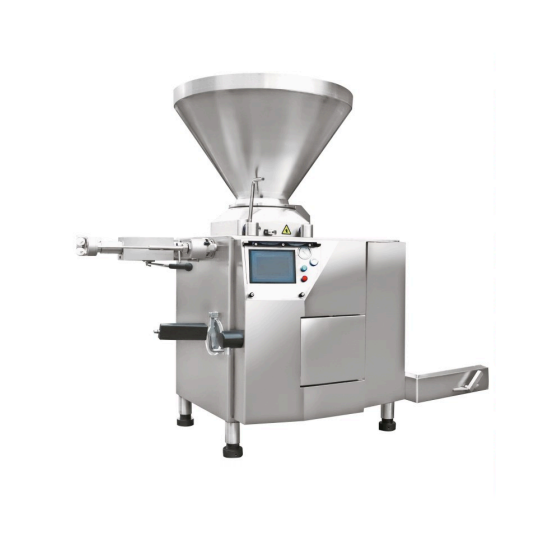
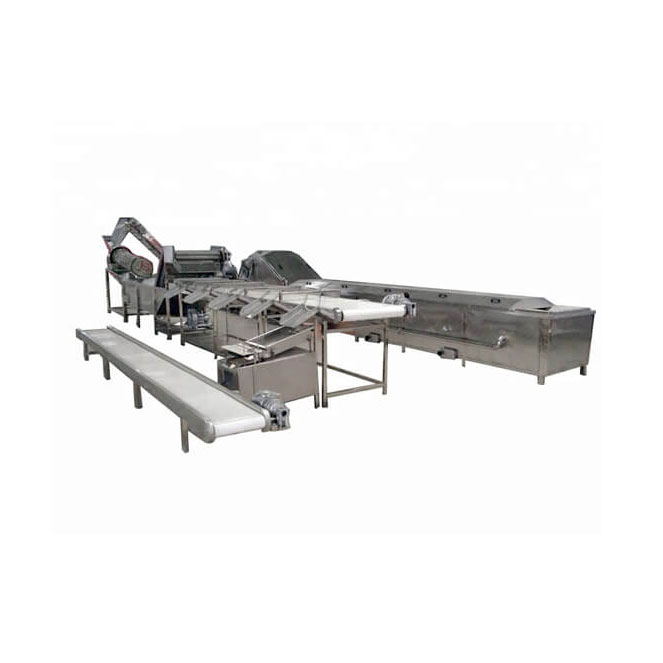
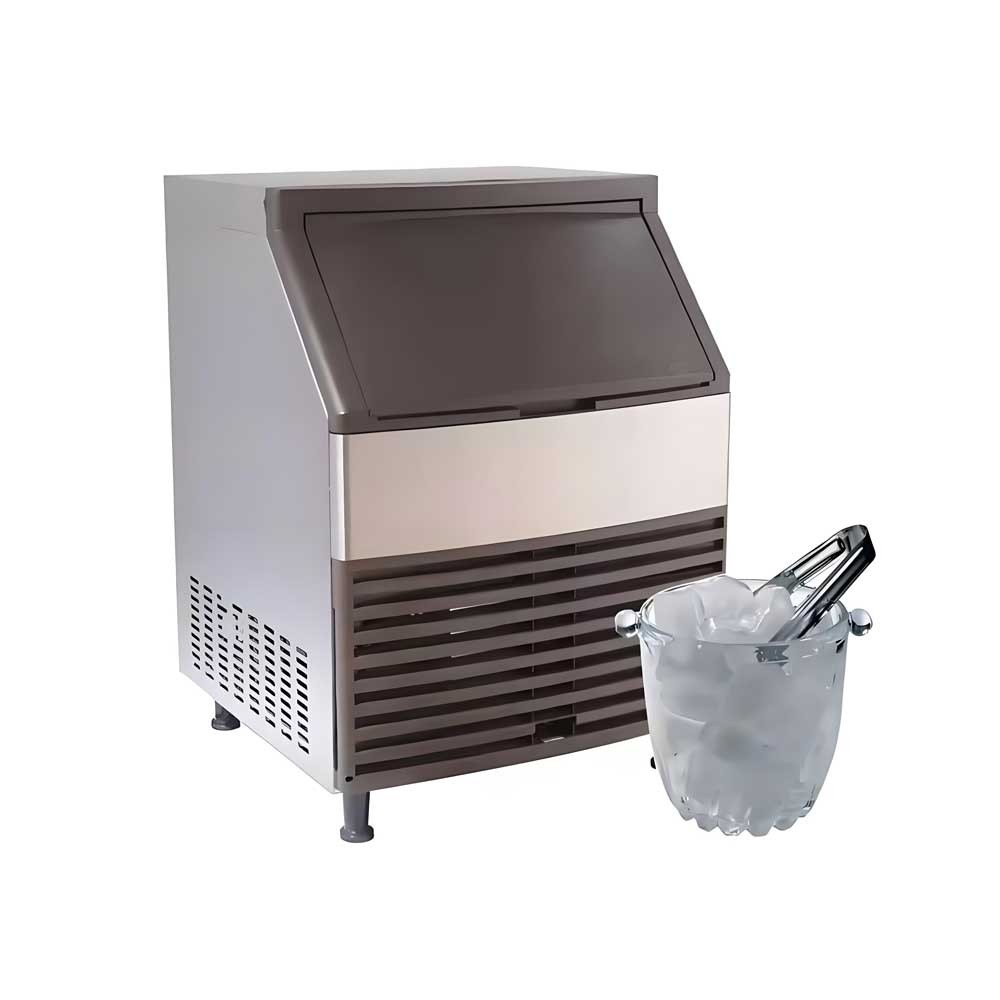
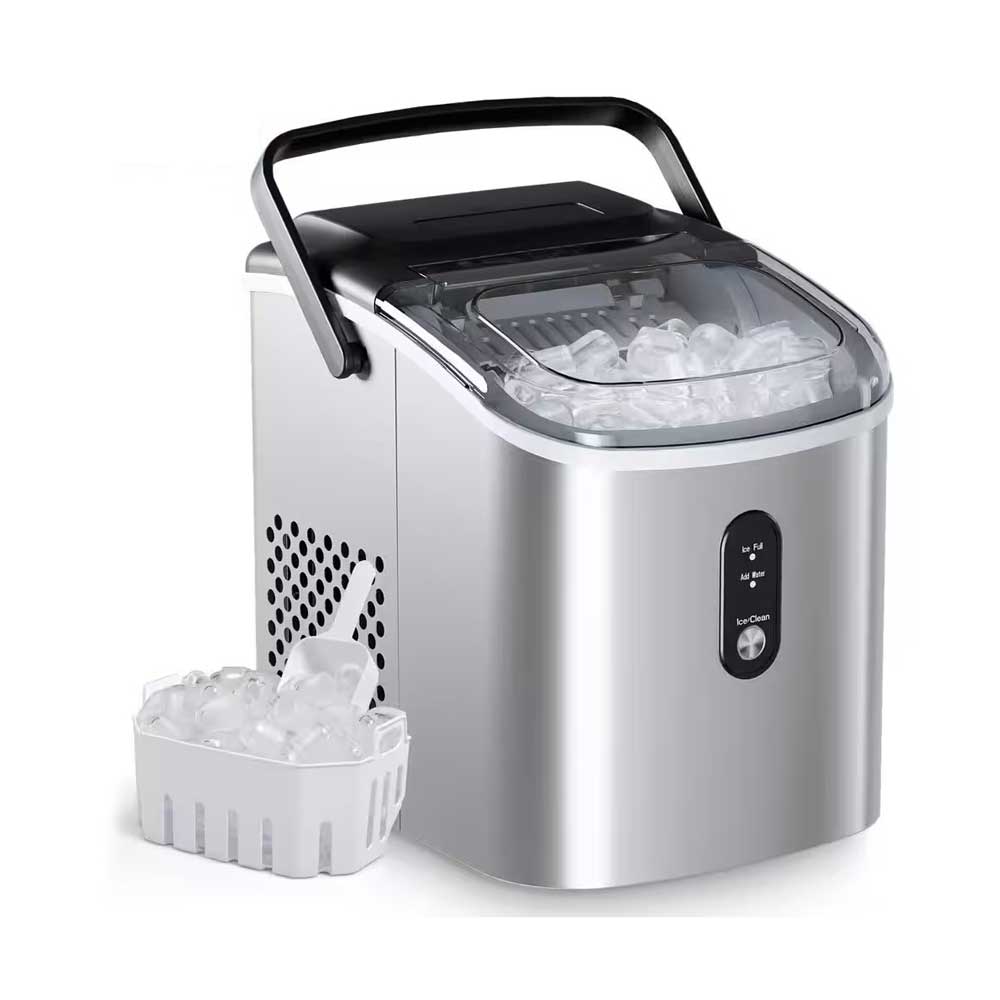 Portable Flake Ice Machine
Portable Flake Ice Machine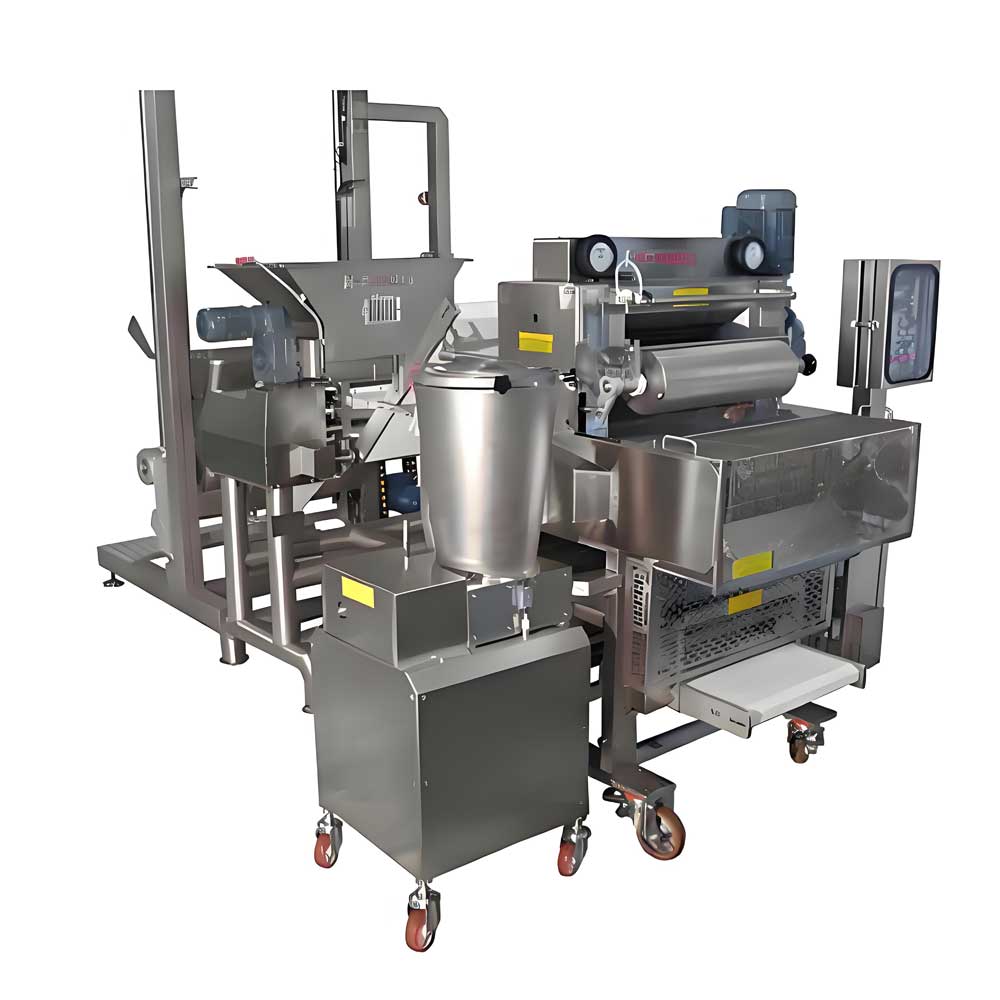 Pelmeni Making Machine
Pelmeni Making Machine
Ready to Get Started?